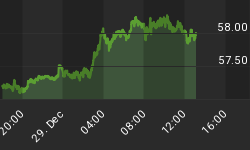Mid-term election years are typically poor performers for most of the year until finding a bottom in the fall and beginning a rally which lasts well into the following pre-election year.
The traditional approach to seasonality during a mid-term election year (chart) shows the final high (prior to the long period of under-performance) in April.
Examining mid-term election years only during secular bear markets (as defined by Lindsay), an inflection point (high) is still expected in April but the final high is expected in February, not April. Either way, a pullback in equities is expected to get started now.
A 165 day cycle low is due near the end of March and matches seasonal expectations for a low this month.
If, during this presumed pullback, the February low near 1,740 can hold, then it would seem the bull market will last until the seasonal high in April. On the other hand, if 1,740 fails to provide support, it seems safe to conclude that the 2009 bull market is finally over.

















